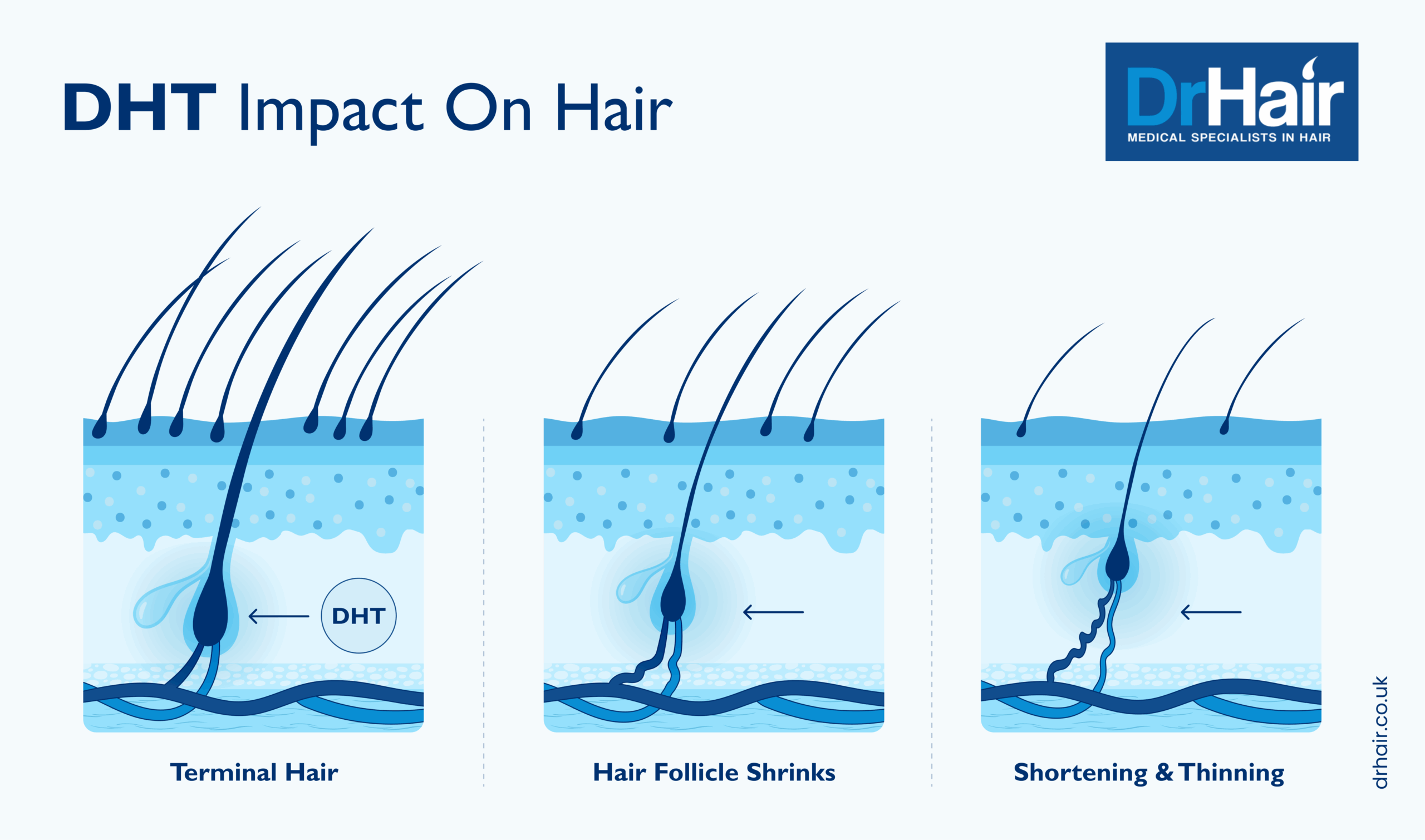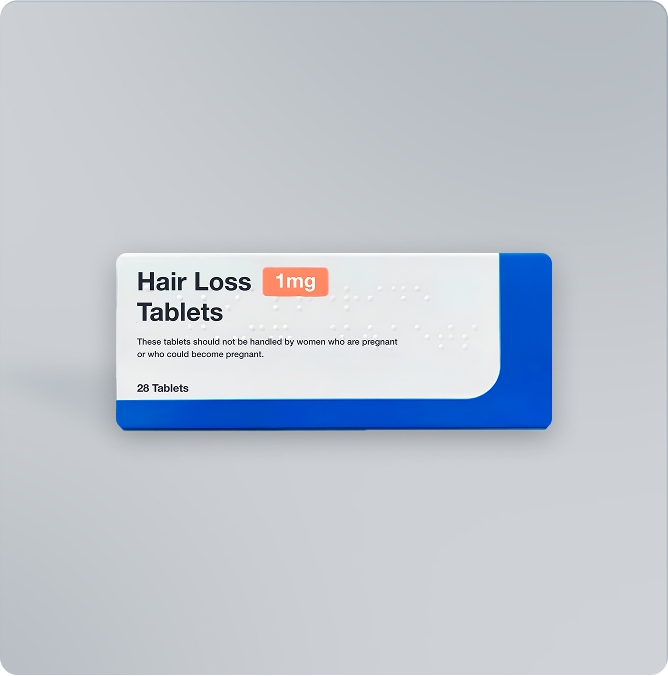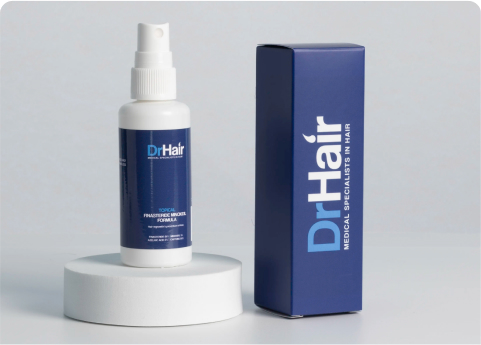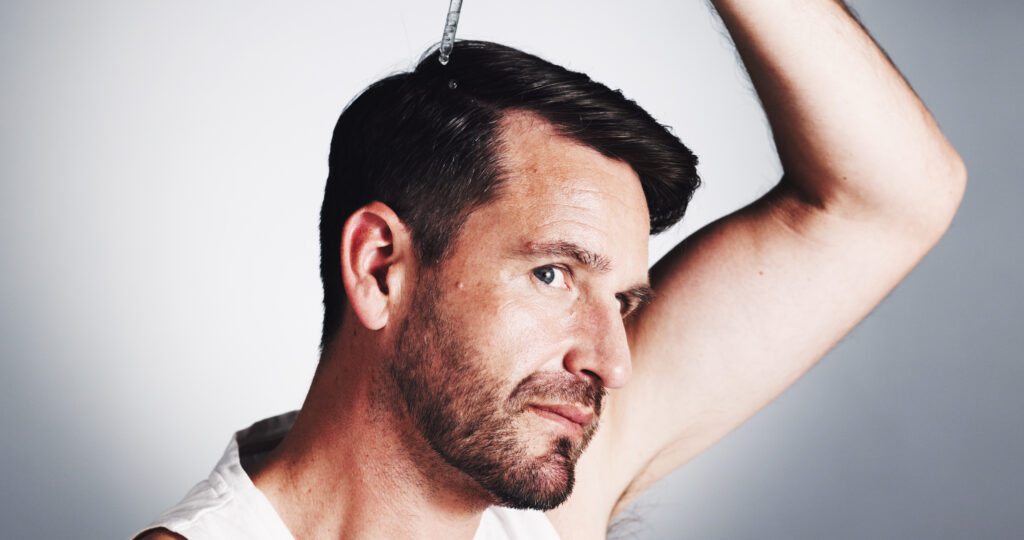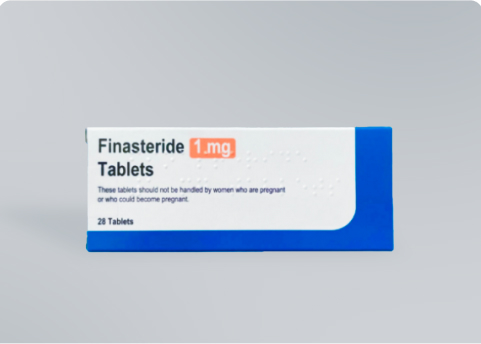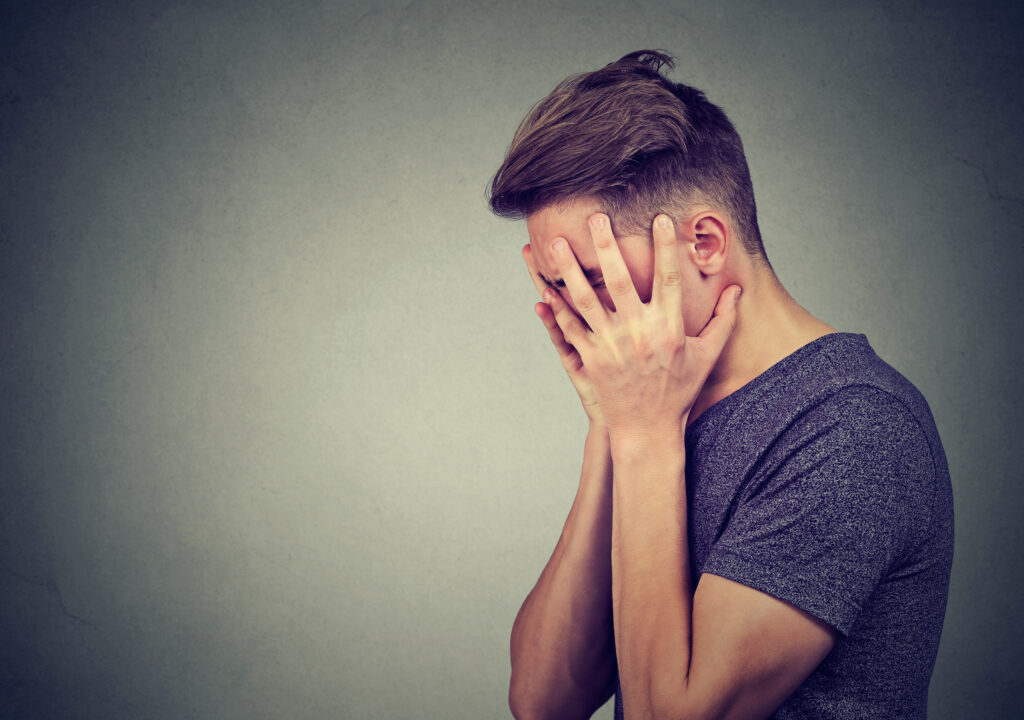Finasteride is one of the best known and most popular treatments for male pattern baldness. By taking finasteride daily, thousands of men are maintaining their hair and limiting the impact of genetic hair loss. It’s why it’s the most commonly prescribed treatment among hair transplant surgeons, with more than 72% often or always recommending it to patients [1].
Finasteride is highly effective, but it has notable potential side effects and it’s not suitable for everyone. Here, you’ll find out what finasteride is, how it works, who can use it, and the side effects to look out for.
Table of Contents
What is finasteride?
Finasteride is a medication that reduces your levels of dihydrotestosterone (DHT), a hormone that shrinks hair follicles and can lead to an enlarged prostate. As well as being licensed as a male pattern baldness treatment, finasteride is used to treat benign prostate hyperplasia (BPH). A higher dose is normally required to treat BPH.
How does finasteride stop hair loss?
Finasteride is a type of drug known as a 5-alpha reductase (5AR) inhibitor. 5AR is an enzyme that facilitates the metabolism of testosterone to DHT. DHT is the key hormone that causes male pattern baldness.
By inhibiting the activity of the 5AR enzyme, finasteride limits your body’s production of DHT, reducing its impact on your hair follicles. This allows your hair follicles to remain intact so they continue to produce healthy hair.
What types of hair loss does finasteride treat?
Finasteride is only licensed to treat male pattern baldness, although some research indicates it may also effectively treat female pattern hair loss [2]. However, finasteride for women isn’t normally recommended, as it can interfere with the menstrual cycle and may be linked with certain birth defects [3].
Finasteride isn’t suitable for treating other types of hair loss, as it’s ineffective against causes like stress, autoimmune activity, or physical tension on the follicles.
Oral vs topical finasteride
Finasteride is most commonly taken as an oral medication, with 72% of hair transplant surgeons always or often recommending this to patients [1]. However, topical finasteride is emerging as an effective treatment for male pattern baldness that may have fewer systemic side effects than the oral version [4].
Who can and can’t take finasteride?
Finasteride is generally suitable for most men who are experiencing male pattern baldness. However, it isn’t suitable for everyone, so it’s essential to check your suitability before starting a course of finasteride.
Because finasteride impacts hormones, it’s generally recommended that women avoid taking finasteride. Women who are pregnant or trying to conceive should avoid any exposure to finasteride, including handling pills. Additionally, you may be advised to avoid finasteride and other 5AR inhibitors if:
- You’re a man who is trying to conceive, as small amounts of finasteride may be transferred in your semen
- You are allergic or sensitive to finasteride or any ingredients in the tablets
- You’re at higher risk of developing prostate cancer
- You have liver disease
It’s important to disclose your medical history to anyone prescribing finasteride so they can ensure you’re getting safe and appropriate treatment.
How long does finasteride take to work?
Many men start seeing the impact of finasteride within just 3 months [5-6]. However, it can take up to 6 months to start seeing results, depending on the length of your hair cycle and how vigilant you are with taking your recommended dose.
Most men are advised to take 1 mg of finasteride per day to treat male pattern baldness.
What are the side effects of finasteride?
Potential side effects of finasteride include:
- Temporary hair shedding
- Erectile dysfunction
- Low sex drive
- Ejaculation and fertility problems
- Low mood and depression
- Suicidal thoughts
- Breast tissue abnormalities
- Testicular pain
- Anaphylaxis (severe allergic reaction)
While uncommon, sexual and mental health side effects from finasteride do affect some users [7]. Some men report that these symptoms persist even after stopping the medication. While more research is needed to prove this effect, it’s important to recognise and understand the risks of taking any medication, including finasteride. Learn more about the serious side effects of finasteride.
Is finasteride effective for hair loss?
Finasteride is one of the most effective treatments for male pattern baldness, with studies reporting hair loss improvements in more than 90% of men [8]. To better understand this hair loss treatment, read more finasteride insights from DrHair.



